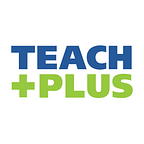Student teachers need better on-ramps into the profession
By Katie Viernum
While working as an assistant teacher at a preschool, I fell in love with teaching. I had not studied education, so I went back to school. I participated in an alternative certification program specifically designed for people like me who were already working in the field of education. There were many advantages: evening classes, minimum tuition, and, most importantly, no need to quit my job. I was able to utilize my classroom for most of my student teaching requirement. That experience was more valuable because it was the setting in which I planned to continue teaching and more authentic because I already had relationships with the children that would continue even after the student teaching experience ended. That program made a teaching license and a master’s degree accessible.
The same is not true for my coworker Liv. Liv started as an assistant teacher in my classroom four years ago, just as she was nearing the end of her teacher preparation program with only the student teaching requirement to complete. As the COVID shutdown happened, this became impossible, but even as schools reopened, Liv continued to postpone her student teaching. Her program requires eleven weeks of student teaching and specifies that candidates cannot get paid. Liv already works at a preschool, and “leaving a job for three months is really challenging. What about health insurance?”
Liv’s situation is not unique. Student teaching practices have remained unchanged for a long time and have been critiqued for just as long. Considering the current teacher shortage, now is the time to rethink the teacher preparation and certification process, especially for early childhood educators. Student teaching should be authentic and valuable. It should not be a barrier to opportunity or a financial burden, especially for people already working in the field. Paraprofessionals, unlicensed lead teachers, childcare providers, and teaching assistants like Liv are a great pool of racially and economically diverse teacher candidates. Supporting them in the certification process would help them advance, thereby increasing equity in the field and providing many more diverse, highly qualified teachers.
The Illinois State Board of Education (ISBE) specifies that student teachers may be paid for student teaching. Unfortunately , not all higher education programs allow this. Still, progress is being made. Grow Your Own and teacher residency programs provide financial support, even if they are limited in their scope. Within the Early Childhood Access Consortium for Education (ECACE), designed specifically for the early childhood workforce, Illinois allows participants to complete student teaching in their place of employment and thus continue to be paid “if the cooperating teacher meets ISBE requirements and the site meets college or university requirements.” The catch is that higher education programs are not required to provide this flexibility and each one functions differently. Recent data indicates that a majority of programs participating in ECACE allow such flexibility for at least some portion of student teaching. The remaining programs should adjust their policies to allow that same flexibility.
In a recent brief from Teach Plus Illinois Early Childhood Policy Fellows, my colleagues and I recommend ways in which ISBE, universities, and other stakeholders can further reduce barriers to student teaching which is a highly valuable experience. Programs should continue to require it, but they should implement more flexibility, particularly for participants with experience in education. All programs should allow student teaching to be paid; to achieve this standard, the state must explicitly prohibit programs from preventing paid student teaching. For incumbent educators, that could mean student teaching for their regular salary at their place of employment.
Allowing educators to student teach where they work would require no additional funding. This also would create fewer transitions and more stability for children, and schools would not need to fill positions temporarily while staff left to student teach elsewhere. For people not currently working in a classroom, the state or individual school districts should provide stipends for reasonable compensation of time. The Teacher Vacancy Grant Pilot Program offers a potential avenue for school districts to financially support student teachers by using funds as “incentives to strengthen pipelines.”
Because of the flexibility of my alternative certification program, I became a lead teacher, which gave me a stronger voice in the classroom and the school, a higher salary, and the ability to assist others on their professional journey. Four years later, Liv still is waiting to finish her program and receive her teaching license. We need to make changes to allow Liv and other teacher candidates to utilize their experience and pursue their passions for the benefit of countless young children. If we take these steps, Liv and others like her could advance in their careers and help fill teacher vacancies in Illinois.
Katie Viernum is a lead teacher at Loyola University Preschool in Chicago and a 2023–2024 Teach Plus Illinois Early Childhood Educator Senior Policy Fellow.
